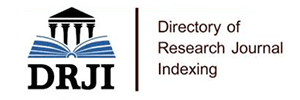
Journal Basic Info
**Impact Factor calculated based on Google Scholar Citations. Please contact us for any more details.Major Scope
- General Oncology
- Ovarian Cancer
- Chemoprevention
- Central Nervous System Tumors
- Colon Cancer
- Neoadjuvant Therapy
- Hematology
- Immunotherapy
Abstract
Citation: Clin Oncol. 2024;9(1):2055.DOI: 10.25107/2474-1663.2055
The Intralesional Hemorrhage Risk for Meningiomas and Dural Metastasis: Is There a Prostaglandin’s Receptors Role in Its Pathogenesis? Case Report
Fazzolari B, Zambuto MR, Gammone V, Richiello A, Brunori A, Menniti A and Delitala A
Neurosurgery Unit, Lancisi Department, San Camillo Forlanini Hospital, Italy
*Correspondance to: Benedetta Fazzolari
PDF Full Text Case Series | Open Access
Abstract:
Background: Many hemorrhage’s risk factors have been listed for brain meningiomas, but intracerebral hemorrhage often occurs for malignant or secondary brain tumors. Maybe that these two eventualities are combined for the histopathological expression of the same hormonal receptors. Case Report: We present three cases of patients treated for intracerebral hemorrhage occurred on brain tumors. Pathological findings of the tumors revealed two cases of meningioma I WHO and a breast cancer metastasis: The prostaglandins’ receptors presented over expression in the all the cases. Conclusion: This correlation could support the hypothesis that the prostaglandin receptor’s expression favorites the intracerebral hemorrhage insurgence.
Keywords:
Meningioma; Breast cancer; Prostaglandin receptors; Dural metastasis
Cite the Article:
Fazzolari B, Zambuto MR, Gammone V, Richiello A, Brunori A, Menniti A, et al. The Intralesional Hemorrhage Risk for Meningiomas and Dural Metastasis: Is There a Prostaglandin’s Receptors Role in Its Pathogenesis? Case Report. Clin Oncol. 2024;9:2055..













